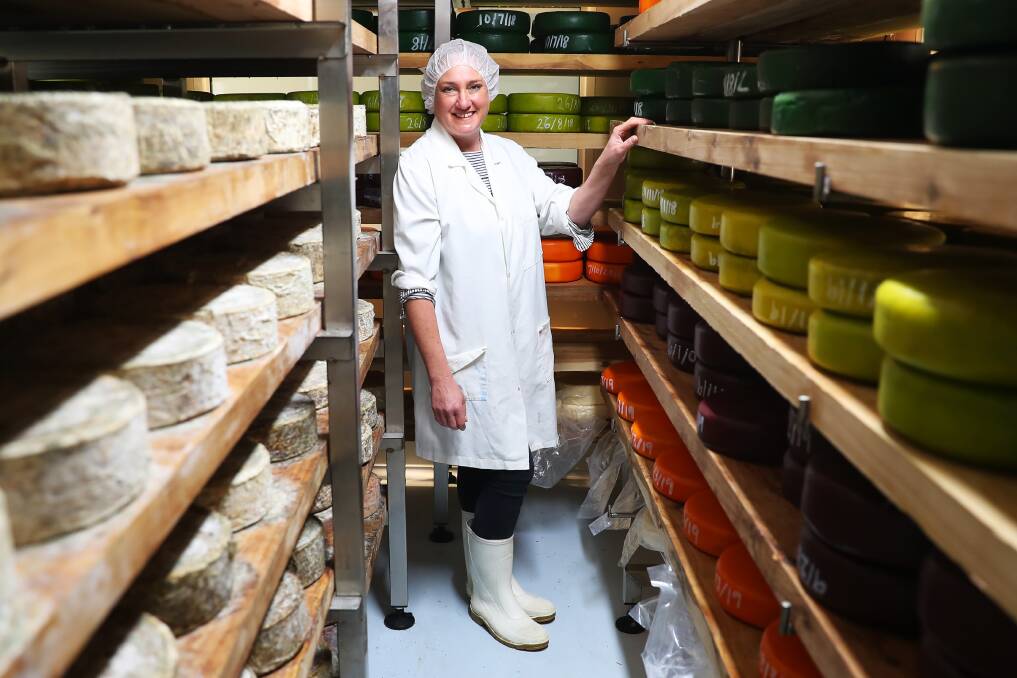Meet the Cheese Makers Melbourne Trusts: The Heritage of Floridia Cheese Thomastown
Opening the Secrets of Artisanal Cheese Making: A Step-by-Step Do It Yourself Overview
In the realm of culinary craftsmanship, artisanal cheese making stands as a testament to the delicate balance between tradition and development. As we begin on this trip to demystify the art of producing charming cheeses, we are encountered with a tapestry of keys and skills waiting to be deciphered.
Selecting the Right Milk
When embarking on the trip of artisanal cheese making, the selection of milk plays a crucial duty in figuring out the high quality and characteristics of the last product. The kind of milk selected influences the flavor, texture, and on the whole profile of the cheese.
Furthermore, the resource of the milk, whether from cows, goats, lamb, or buffalo, contributes unique tastes and characteristics to the cheese. Each type of milk brings its very own subtleties, permitting for a wide range of cheese ranges to be crafted based on the picked milk.
Culturing and Coagulating
To start the cheese-making process, the vital steps of culturing and coagulating should be thoroughly performed to transform milk right into curds and whey. The type of culture utilized can dramatically affect the flavor, texture, and ripening of the last cheese item.

The timing and temperature level control during culturing and coagulation are crucial variables that affect the final result of the cheese. Correct execution of these actions is important to make sure the desired appearance, flavor, and uniformity of the artisanal cheese being generated.
Draining Pipes and Pressing Curds
After the milk proteins have coagulated and the curds have actually been cut to release whey, the next critical step in artisanal cheese making includes draining pipes and pressing the curds to achieve the preferred structure and uniformity of the last cheese product. The time for draining pipes can vary depending on the kind of cheese being made and the preferred dampness content.
When the curds have actually completely drained pipes, the following step is pressing. Pressing helps get rid of any kind of staying whey and compacts the curds to develop a solid cheese wheel. Pressing can be done making use of specialized cheese presses that use regular and mild pressure over an amount of time. The period and stress applied throughout pushing will affect the last texture of celebrity, from soft and creamy to tough and company. Appropriate pushing and draining pipes are vital steps that considerably affect the top quality and characteristics of the artisanal cheese being created.
Aging and Flavor Techniques
Carrying out thorough aging and flavoring strategies is critical in boosting the depth and intricacy of artisanal cheeses, elevating their preference profiles to elegant levels of refinement and class. Aging plays an important duty in developing the special flavors and structures that identify artisanal cheeses.
Flavoring strategies additionally add dramatically to the final taste of artisanal cheeses. Cheesemakers might pick to introduce extra tastes by including ingredients such as natural herbs, seasonings, or even fruits into the cheese during the manufacturing procedure. Additionally, some cheeses are washed or scrubed with different fluids, such as salt water or alcohol, to enhance their flavors and structures.
Wrapping and Keeping Cheeses

Conclusion
To conclude, understanding the art of artisanal cheese making entails very carefully selecting the ideal milk, following exact culturing and coagulating procedures, draining and pushing curds efficiently, and utilizing different aging and flavoring strategies. By following these actions faithfully and with attention to information, you can develop your own tasty and one-of-a-kind cheeses at home. Keep in mind to cover and save your cheeses correctly to make sure optimum flavor and texture growth. Happy cheese making!
Each type of milk brings its own nuances, enabling for a vast array of cheese varieties to be crafted based on the selected milk.After the milk healthy proteins have actually coagulated and the curds have actually been reduced to launch whey, the following crucial step in artisanal cheese making involves draining and pressing the curds to accomplish the preferred texture and consistency of the final cheese item. The majority of cheeses need to be check it out covered in wax paper or cheese paper to permit them to take a breath while securing them from drying out. For cheeses that require to proceed aging, such as bloomy skins or washed rinds, guarantee they are saved in a trendy setting like a cheese cave or a refrigerator established to the proper temperature. By paying attention to the covering and storage space of artisanal cheeses, cheese makers and enthusiasts can maintain the honesty of these delicacies and fully appreciate their intricate flavors.